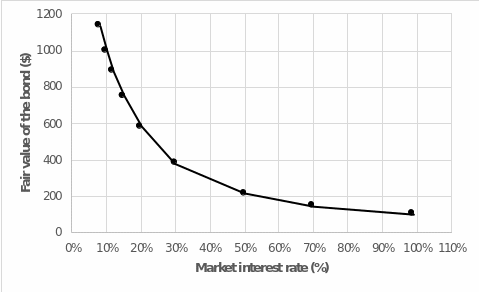When performing financial calculations, it is crucial to distinguish strictly between theoretical concepts. This will allow for a deeper understanding of the essence of the calculations being made and not to get confused when searching for a solution to a problem. In the context of this study, these concepts are bond value — otherwise known as bond price — and market interest rate. The formula that has been used in calculating the fair value of bonds is as follows (Hayes, 2021):


As should be noted, there is clearly a generally inverse relationship between the fair value of bonds and the interest rate. In other words, when the cost of borrowing money — i.e., the interest rate — goes up, the price of bonds should go down (Lioudis, 2021). This was clearly seen in two examples with different interest rates: 8% and 12%. In the case of the lower rate, a higher bond price was achieved, and vice versa. So the hypothesis of inverse proportionality is empirically confirmed. Economic theory suggests that this relationship between the two concepts is not coincidental: when interest rates rise, more investors are unwilling to choose a low fixed rate on bonds, and, as a result, low demand gives rise to lower bond values. As a final confirmation of the thesis, it is appropriate to use random interest rates — in ascending order — to simulate the dynamics of the value of bonds purchased over ten years as the interest market rate changes. As shown in the graph below, this relationship reflects an inverse exponential growth, which means that when the interest rate rises, the price of bonds does experience a severe drop.

Reference List
Hayes, A. (2021) Bond valuation.
Lioudis, N. (2021) The inverse relationship between interest rates and bond prices.